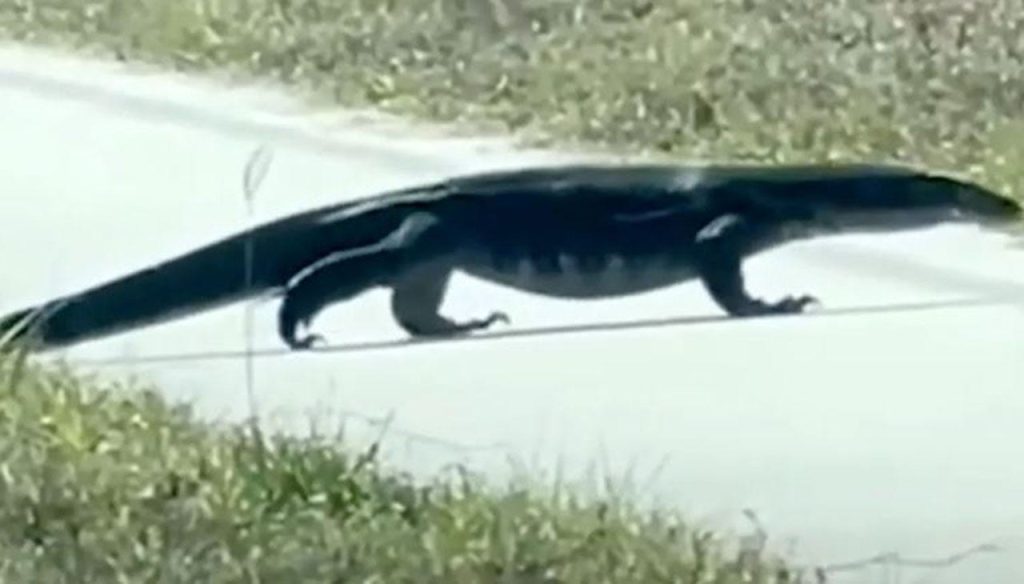In western Florida, a massive 5-foot-long Asian water monitor lizard was recently spotted on a busy road by a woman named Renee Aland. Aland was driving down Hillsboro Road in North Port when she noticed the impressive creature and decided to film it to show the Florida Fish and Wildlife Conservation Commission. At first, she thought it was an alligator but upon closer inspection, she realized it was a lizard. The lizard’s size reminded Aland’s daughter of a pet lizard from the Disney Channel show “Jessie.” Despite its impressive size, the concern is that these invasive species could disrupt the local ecosystem by preying on other wildlife.
The Asian water monitor is not native to the United States but is common as a pet and legal to own. These lizards can grow to be anywhere from four to six feet long and have a varied diet that includes snakes, insects, birds, frogs, rodents, and small birds. They are known to be voracious eaters and considered one of the largest lizards in the world. This particular lizard was captured on video by Aland as it confidently strode across the road, showcasing its impressive size and agility. While the lizard was certainly a sight to see, the worry is about the impact it could have on the native wildlife of the area if left unchecked.
The video of the large lizard crossing a busy road in Florida sparked concerns about invasive species making their way into the state. Just a week prior, another invasive species, the Peter’s rock agama, was spotted moving up the coast of Florida. Residents of West Melbourne observed the red-headed reptiles in their area, leading to questions about the environmental impact of these invasive species. Ken Gioeli, a natural resources extension agent with the University of Florida, referred to the lizards’ movement as “the invasion front,” indicating that these species could be causing harm to the local ecosystem that has not yet been fully understood.
The Peter’s rock agama, indigenous to tropical, sub-Saharan Africa, first appeared in Florida in 1976 and has since spread to 20 counties from Monroe to Volusia. While the exact impact of these lizards on the local wildlife is not fully known, the Florida Fish and Wildlife Conservation Commission is monitoring their populations and activities. Gioeli mentioned that the lizards are having some impact on the environment, but the extent of their influence remains unclear. Residents in Florida are becoming more aware of these invasive species and their potential to disrupt the delicate balance of the local ecosystem, creating a need for increased monitoring and control measures to prevent further harm.
The presence of large and potentially disruptive invasive species like the Asian water monitor and Peter’s rock agama in Florida raises concerns about the impact on native wildlife. While these creatures are fascinating to observe due to their size and unique characteristics, they have the potential to upset the delicate balance of the local ecosystem. Efforts by the Florida Fish and Wildlife Conservation Commission and other agencies to monitor and manage these invasive species are crucial to prevent further disruptions and protect the native flora and fauna of the state. Public awareness and education about invasive species can also help in preventing their spread and mitigating their negative effects on the environment.
The sighting of a 5-foot-long Asian water monitor lizard in western Florida highlights the issue of invasive species making their way into the state and potentially causing harm to the local ecosystem. The presence of these creatures, known for their voracious appetites and large size, raises concerns about their impact on native wildlife. Efforts by organizations like the Florida Fish and Wildlife Conservation Commission to monitor and manage these invasive species are essential in protecting the delicate balance of the environment. Public awareness and education about invasive species can also play a crucial role in preventing their spread and minimizing their negative effects on the local flora and fauna.


